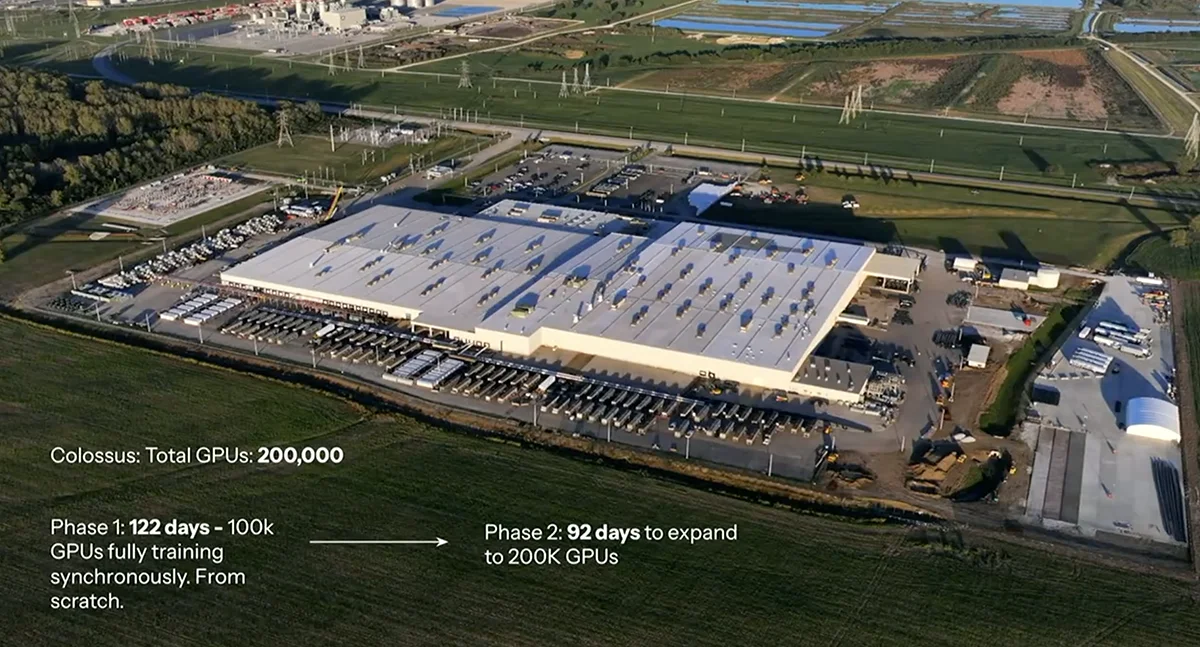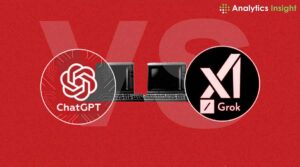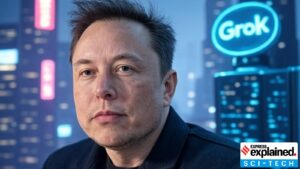Transforming a Factory Shell into an AI ‘Colossus’ for Grok 3

Inside xAI’s Grok 3 and the Colossus Supercomputer
In an innovative move, xAI has transformed a repurposed Electrolux factory in Memphis into a cutting-edge supercomputer known as "Colossus." This state-of-the-art facility houses an impressive 200,000 Nvidia H100 GPUs, designed to efficiently train their AI platform, Grok 3. Elon Musk, alongside senior employees at xAI, has hailed Grok 3 as “the smartest AI on Earth” during a recent livestream, emphasizing the powerful capabilities of each GPU, which can handle up to four quadrillion floating-point operations per second (PFLOPS).
Advanced Cooling Systems and Future Upgrades
Colossus employs a unique liquid-cooling mechanism rather than standard fans. Musk pointed out that this design is unprecedented in large-scale implementations. Importantly, xAI continues to enhance Grok 3 daily, with plans to incorporate Nvidia’s upcoming H200 GPUs that are expected to offer 141 GB of HBM3e memory. Furthermore, the company intends to eventually shift to Blackwell GB200 chips capable of delivering 20 PFLOPS each. Remarkably, xAI built Colossus in a fraction of the typical time required for data center projects, converting the once-abandoned site into a significant AI-focused establishment.
The Journey to Build Colossus
A Rapid-Build Supercomputer
In a remarkable 122 days, xAI repurposed the Electrolux factory to create Colossus, starting with 100,000 Nvidia H100 GPUs. In just under three months, this number increased to 200,000 GPUs, a necessity after the previous model, Grok 2, was limited to just 8,000 GPUs. Colossus is powered by an estimated 250 megawatts, bolstered by Tesla MegaPacks that manage the fluctuations in power demand typical during AI training.
Choosing Memphis as the Location
The decision to set up in Memphis was strategic. The old Electrolux factory provided ample warehouse space and an initial capacity of 15 megawatts of industrial power. This was scaled up to approximately 250 megawatts with the addition of Tesla MegaPacks. Musk’s team opted to avoid lengthy construction timelines of 18 to 24 months by leasing generators, which accelerated the setup process.
Overcoming Technical Challenges
Assembling such an extensive network of interconnected GPUs within a single year presented numerous challenges, from BIOS mismatches to tangled network cables, and even cosmic-ray interference causing random errors. Jimmy Ba from xAI humorously described the situation as a “battle against entropy.” One notable incident involved Musk working through the night to fix a BIOS mismatch while the team reconfigured cables to ensure stability.
Hardware and System Architecture
xAI’s Colossus operates using 200,000 Nvidia H100 GPUs, which connect through ultra-fast interconnects. According to Igor Babuschkin, this is the largest fully connected H100 cluster to date. Each GPU features 80 GB of HBM2e memory, offers 2 TB/s of bandwidth, and can achieve close to 4 PFLOPS of performance when optimized. The installation has also implemented a custom liquid-cooling solution after utilizing a significant portion of the nation’s mobile cooling resources. Looking ahead, Musk hinted at the potential for future upgrades including Nvidia’s Blackwell GB200 GPUs, which promise even higher performance.
Continuous Improvement and Training Methodology
Grok 3’s development benefits from a process termed “continuous daily improvement.” This approach leverages online fine-tuning and reinforcement learning for ongoing updates. The supercomputer is able to generate synthetic data using smaller models, which is then utilized for focused training sessions for Grok 3. This strategy requires precise management of partial retraining processes across the GPU array, even while confronting challenges like cosmic-ray-induced errors.
Initial Performance Observations
Although Grok 3 is designed to be a major advancement, early evaluations from AI experts have yielded mixed feedback. Andrej Karpathy has commended its skill in processing complex academic papers, yet pointed out its limitations with certain logic challenges, suggesting its performance is comparable to OpenAI’s “o1-pro” model. While earlier iterations of Grok managed impressive Arena scores, Grok 3 was noted for only marginally surpassing Google’s Gemini 2.0 and OpenAI’s ChatGPT-4o. Experts like Ethan Mollick labeled it a "very solid frontier model," but acknowledged OpenAI’s continued lead in enterprise partnerships. Overall, xAI’s internal benchmarks indicate Grok 3 performs slightly better in math, science, and coding tasks, however, outside evaluations will provide a clearer perspective in the future.






